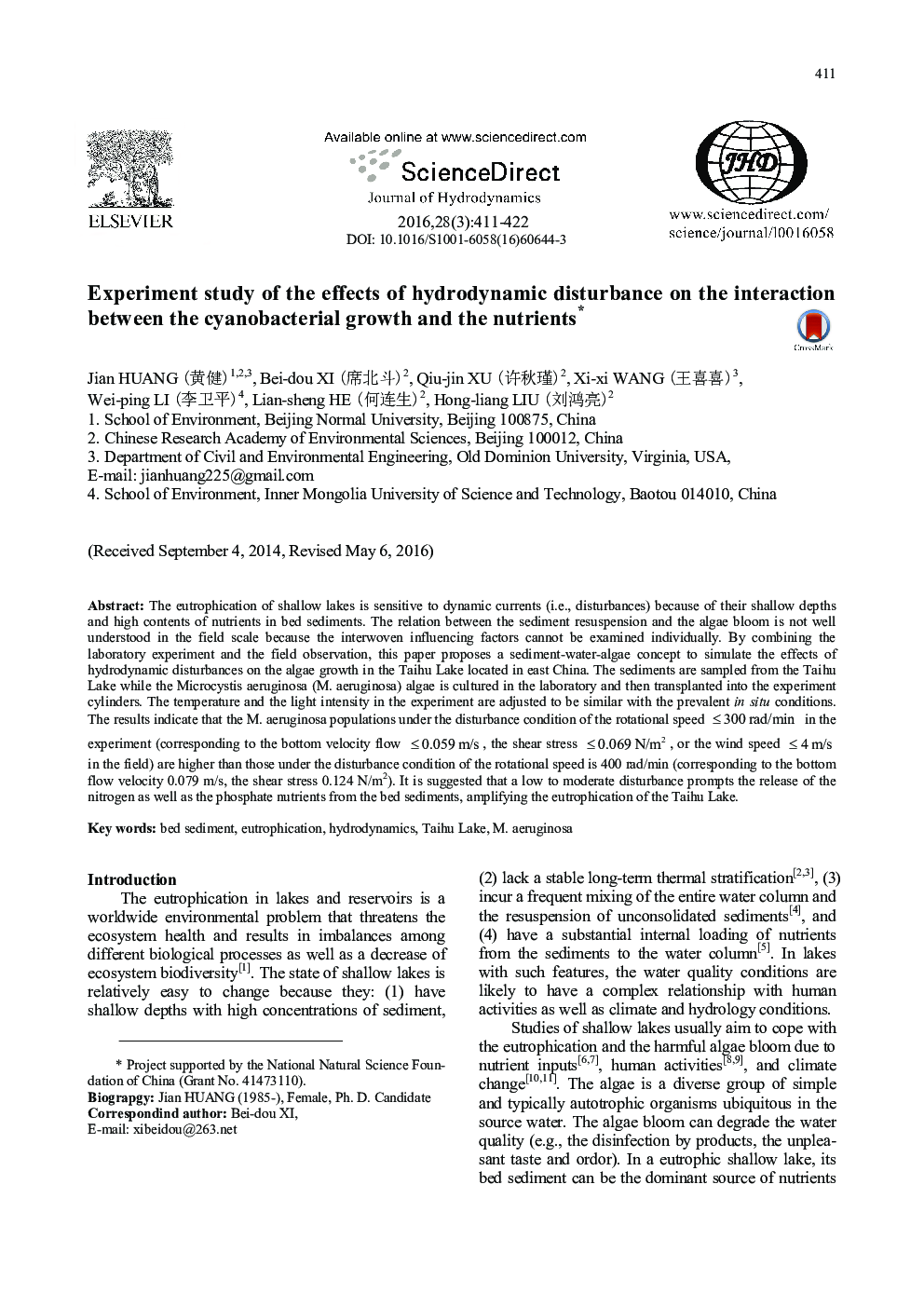| Article ID | Journal | Published Year | Pages | File Type |
|---|---|---|---|---|
| 1721837 | Journal of Hydrodynamics, Ser. B | 2016 | 12 Pages |
The eutrophication of shallow lakes is sensitive to dynamic currents (i.e., disturbances) because of their shallow depths and high contents of nutrients in bed sediments. The relation between the sediment resuspension and the algae bloom is not well understood in the field scale because the interwoven influencing factors cannot be examined individually. By combining the laboratory experiment and the field observation, this paper proposes a sediment-water-algae concept to simulate the effects of hydrodynamic disturbances on the algae growth in the Taihu Lake located in east China. The sediments are sampled from the Taihu Lake while the Microcystis aeruginosa (M. aeruginosa) algae is cultured in the laboratory and then transplanted into the experiment cylinders. The temperature and the light intensity in the experiment are adjusted to be similar with the prevalent in situ conditions. The results indicate that the M. aeruginosa populations under the disturbance condition of the rotational speed ≤300 rad/min in the experiment (corresponding to the bottom velocity flow ≤0.059 m/s, the shear stress ≤0.069 N/m2, or the wind speed ≤4 m/s in the field) are higher than those under the disturbance condition of the rotational speed is 400 rad/min (corresponding to the bottom flow velocity 0.079 m/s, the shear stress 0.124 N/m2). It is suggested that a low to moderate disturbance prompts the release of the nitrogen as well as the phosphate nutrients from the bed sediments, amplifying the eutrophication of the Taihu Lake.
